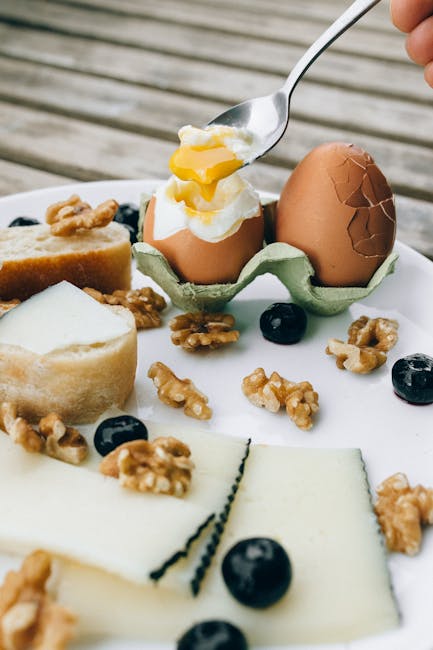How Is Cottage Cheese Made? A Deep Dive into the Production Process
Cottage cheese, a beloved dairy product known for its creamy texture and slightly tangy flavor, holds a special place in many diets. But have you ever wondered about the journey this simple yet delightful food takes from milk to your plate? This comprehensive guide will unravel the mystery, exploring every step of the cottage cheese making process, from the initial milk selection to the final packaging.

The Starting Point: Milk Selection and Preparation
The quality of the final product begins with the quality of the milk. Typically, cottage cheese is made using pasteurized cow’s milk, although other milks like goat’s milk can also be used, resulting in variations in taste and texture. The milk undergoes a crucial initial step: standardization. This process ensures a consistent fat content, typically ranging from 0% to 4% depending on the desired final product. Standardization involves adjusting the fat content by adding cream or skim milk as needed to achieve the target fat percentage.

Pasteurization: A Crucial Step for Safety
Following standardization, the milk undergoes pasteurization. This heat treatment eliminates harmful bacteria and pathogens, ensuring the safety of the final product. Pasteurization involves heating the milk to a specific temperature (usually around 161°F or 72°C) for a short period, then rapidly cooling it. This process kills harmful microorganisms without significantly altering the milk’s flavor or nutritional value.
The Magic of Cultures: Acidification and Coagulation
The next crucial stage is the addition of bacterial cultures. These cultures, typically Streptococcus cremoris and Lactococcus lactis, are responsible for the characteristic tangy flavor and the eventual coagulation of the milk. These bacteria ferment the lactose (milk sugar) in the milk, converting it into lactic acid. The increased acidity causes the milk proteins (primarily casein) to coagulate, forming curds and whey.
The Coagulation Process: From Liquid to Curds
The time it takes for the milk to coagulate depends on several factors, including the temperature, the type and amount of starter culture, and the initial acidity of the milk. The process is carefully monitored, usually taking several hours. As the lactic acid builds up, the milk proteins begin to clump together, forming the characteristic curds. The whey, a watery liquid containing lactose, vitamins, and minerals, separates from the curds.
Cutting the Curds: Separating the Whey
Once the milk has reached the desired level of acidity and coagulation, the curds are carefully cut. This is a crucial step in determining the final texture of the cottage cheese. The curds are cut into small pieces, allowing for more efficient drainage of the whey. The size of the curd cuts directly impacts the final texture: smaller cuts result in a smoother, more tender cottage cheese, while larger cuts produce a coarser, more chunky variety.
Heating and Draining: Refining the Texture
After cutting, the curds are gently heated, typically to a temperature between 100°F and 110°F (38°C and 43°C). This heating process helps to firm up the curds and further separate the whey. The whey is then drained from the curds. Different methods are used for draining, including draining in specialized cheesecloth bags or using a centrifuge to speed up the process. The thoroughness of the draining impacts the final moisture content of the cottage cheese.

Cooling and Salting: Enhancing Flavor and Preservation
After draining, the curds are cooled to inhibit further bacterial growth and improve the texture. Salt is often added to enhance the flavor and to act as a preservative, extending the shelf life of the cottage cheese. The salt also helps to draw out even more moisture, contributing to a firmer texture. The amount of salt added varies depending on the desired taste.
Packaging and Distribution: The Final Stages
The final stage involves packaging the cottage cheese for distribution. The cooled, salted curds are carefully packed into containers, usually tubs or cups. The packaging ensures the product’s freshness and protects it from contamination. Modern cottage cheese production often involves automated packaging lines to ensure high efficiency and consistent quality.
Different Types of Cottage Cheese
The process described above is a general overview. Variations exist, resulting in different types of cottage cheese available on the market. These variations primarily relate to the fat content (ranging from low-fat to whole milk) and the size and texture of the curds. Some manufacturers also add cream or other ingredients to enhance the flavor and texture.
The Nutritional Value of Cottage Cheese
Cottage cheese is a valuable source of protein, calcium, and other essential nutrients. Its high protein content makes it a popular choice for athletes and those seeking to build muscle mass. The calcium contributes to bone health, and it’s also a good source of vitamin B12. The nutritional profile can vary slightly depending on the fat content.
Conclusion
The journey from milk to cottage cheese is a fascinating process, involving precise steps and careful attention to detail. Understanding this process allows consumers to appreciate the craftsmanship and quality behind this delicious and nutritious dairy product. Next time you enjoy a serving of cottage cheese, you’ll have a deeper appreciation for the meticulous steps that went into its creation.

